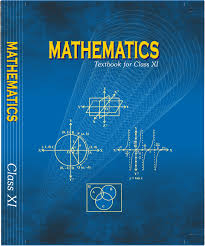Class 11 - Mathematics
Relation - Exercise 2.3

Top Block 1
Question 1:
- Which of the following relations are functions? Give reasons. If it is a function, determine its domain and range.
(i) {(2, 1), (5, 1), (8, 1), (11, 1), (14, 1), (17, 1)}
(ii) {(2, 1), (4, 2), (6, 3), (8, 4), (10, 5), (12, 6), (14, 7)}
(iii) {(1, 3), (1, 5), (2, 5)}.
Answer:
(i) {(2, 1), (5, 1), (8, 1), (11, 1), (14, 1), (17, 1)}
Since 2, 5, 8, 11, 14, and 17 are the elements of the domain of the given relation having their
unique images, this relation is a function.
Here, domain = {2, 5, 8, 11, 14, 17} and range = {1}
(ii) {(2, 1), (4, 2), (6, 3), (8, 4), (10, 5), (12, 6), (14, 7)}
Since 2, 4, 6, 8, 10, 12, and 14 are the elements of the domain of the given relation having
their unique images, this relation is a function.
Here, domain = {2, 4, 6, 8, 10, 12, 14} and range = {1, 2, 3, 4, 5, 6, 7}
(iii) {(1, 3), (1, 5), (2, 5)}
Since the same first element i.e., 1 corresponds to two different images i.e., 3 and 5, this
relation is not a function.
Question 2:
Find the domain and range of the following real functions:
(i) f(x) = -|x| (ii) f(x) = √(9 – x2)
Answer:
(i) f(x) = –|x|, x ∈ R
We know that |x| = x, if x ≥ 0
−x, if x < 0
So, f(x) = -|x| = −x, if x ≥ 0
x, if x < 0
Since f(x) is defined for x ∈ R, the domain of f is R.
It can be observed that the range of f(x) = –|x| is all real numbers except positive real
numbers.
So, the range of f is (−∞, 0].
(ii) f(x) = √(9 − x2)
Since √(9 − x2) is defined for all real numbers that are greater than or equal to –3 and less than
or equal to 3, the domain of f(x) is {x : –3 ≤ x ≤ 3} or [–3, 3].
For any value of x such that –3 ≤ x ≤ 3, the value of f(x) will lie between 0 and 3.
So, the range of f(x) is {x: 0 ≤ x ≤ 3} or [0, 3].
Question 3:
A function f is defined by f(x) = 2x –5. Write down the values of
(i) f(0), (ii) f(7), (iii) f(-3).
Answer:
The given function is f(x) = 2x – 5.
Therefore,
(i) f(0) = 2 * 0 – 5 = 0 – 5 = –5
(ii) f(7) = 2 * 7 – 5 = 14 – 5 = 9
(iii) f(–3) = 2 * (–3) – 5 = – 6 – 5 = –11
Question 4:
The function ‘t’ which maps temperature in degree Celsius into temperature in degree Fahrenheit is defined by t(C) = 9C/5 + 32. Find
(i) t(0) (ii) t(28) (iii) t(–10) (iv) The value of C, when t(C) = 212.
Answer:
The given function is f(C) = 9C/5 + 32
Therefore,
(i) t(0) = (9 * 0)/5 + 32 = 0 + 32 = 32
(ii) t(28) = (9 * 28)/5 + 32 = 252/5 + 32 = (252 + 32 * 5)/5 = (252 + 160)/5 = 412/5
(iii) t(–10) = {9 * (-10}/5 + 32 = 9 * (-2) + 32 = -18 + 32 = 14
(iv) It is given that t(C) = 212
⇒ 212 = 9C/5 + 32
⇒ 9C/5 = 212 – 32
⇒ 9C/5 = 180
⇒ 9C = 180 * 5
⇒ 9C = 900
⇒ C = 900/9
⇒ C = 100
Hence, the value of t, when t(C) = 212, is 100
Mddle block 1
Question 5:
Find the range of each of the following functions.
(i) f(x) = 2 – 3x, x ∈ R, x > 0.
(ii) f(x) = x2 + 2, x is a real number.
(iii) f (x) = x, x is a real number.
Answer:
Let x > 0
⇒ 3x > 0
⇒ 2 –3x < 2
⇒ f(x) < 2
Hence, Range of f = (-∞, 2)
(ii) Let x be any real number.
Now, x2 ≥ 0
⇒ x2 + 2 ≥ 0 + 2
⇒ x2 + 2 ≥ 2
⇒ f(x) ≥ 2
Hence, Range of f = [2, ∞)
(iii) Given, f(x) = x, x is a real number
It is clear that the range of f is the set of all real numbers.
Hence, Range of f = R
Bottom Block 3
Click here to visit Official CBSE website
Click here for NCERT solutions
Click here to visit Official Website of NCERT
Click here to download NCERT Textbooks

